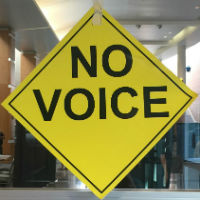UR CTSI and Vanderbilt Team Up to Make Surveys More Accessible
The Rochester Prevention Research Center: National Center for Deaf Health Research (NCDHR), part of the University of Rochester Clinical and Translational Science Institute, has been doing survey research in American Sign Language (ASL) since 2004. And it hasn’t always been easy - from clunky stand-alone computers to expensive custom software. Now, NCDHR worked with the Vanderbilt Institute for Clinical and Translational Research (VICTR) to launch a user-friendly tool that makes it easier for anyone to create research surveys that are accessible for use with Deaf and DeafBlind people.{^widget|(name)YouTubeVideo|(VideoURL)https%3a%2f%2fwww.youtube-nocookie.com%2fembed%2fOERIiM7MpBQ|(Width)425|(Height)355|(AutoPlay)False|(Container)16_9AspectRatio|(ContainerTitle)New+tool+makes+surveys+accessible+for+people+who+are+Deaf+and+DeafBlind.+|(widget_displayname)YouTube+video^}
(Click on CC in Settings to view English captions. Video description and full transcript are available in YouTube.)
The tool, called the Rochester Accessibility Survey, is an external module for REDCap, a popular web application for building and managing online surveys and databases that was developed at the Vanderbilt University Medical Center in 2004. Designed with Deaf and DeafBlind communities in mind, the module makes it easy to embed individual sign language videos for each survey question and answer, which allows participants to take the survey in their primary language without having to hold a question and its possible answers in memory before making a selection.
That was a primary concern for Jenna Stewardson, who led the development of the new module. When they and their colleagues at the NCDHR used REDCap to produce a very large and complicated ASL survey in 2018, they recognized several ways the process could be improved for both survey makers and takers.
“Participants had a difficult time reviewing the videos to make sure they were choosing the right answer, especially when a question had a large list of options,” said Stewardson. “We wanted to break down the survey further and embed a video for each question and answer option so the participant can click on a single item and a video will appear that presents that specific item instead of the whole set of question and answer options.”
Using the module, survey makers can also associate multiple videos for each survey item, enabling each item to be presented in different sign language modalities. For example, a survey taker could choose a video that shows the survey question in ASL, or in Signed English, allowing them to select the modality that best matches their communication preferences.
These features not only improve accessibility and user experience, they also enhance the accuracy and reliability of the response data. That’s extremely important when working with Deaf populations, which are typically overlooked, excluded and underserved by healthcare and health research.
“We were thrilled to work with the NCDHR team on this initiative to fill an important need, empowering both researchers and research participants,” said REDCap creator Paul Harris, Ph.D., professor of Biomedical Informatics, Biomedical Engineering and Biostatistics at Vanderbilt University Medical Center. “The Rochester team has decades of experience working with Deaf and DeafBlind communities, so we were grateful for the opportunity to collaborate.”
Stewardson worked closely with Harris’ REDCap Data Core team at Vanderbilt to make that happen. The NCDHR and VICTR teams worked together to build and test the new module, adding features like the ability to adjust text size and color as well as background color to improve readability, and using a responsive design to ensure videos display optimally no matter what device (phone, desktop, tablet) a survey participant prefers to use.
REDCap provides user-friendly tools for survey makers, and the Rochester Accessibility Survey external module extends that ease-of-use to features that enhance the ability to produce and conduct surveys in ASL, to an extent that has never been achieved before. While it has often been prohibitively expensive and complicated to create surveys in sign language, now it can be done with a small budget and without any special expertise in web or application development.
Stewardson and the NCDHR hope the Rochester Accessibility Survey module will help others make research surveys that are accessible for use with Deaf populations and hope others will explore the potential broader applications of this tool that could help to reach other communities that have been historically marginalized.
###
This work is a product of a Health Promotion and Disease Prevention Research Center supported by Cooperative Agreement Numbers U48-DP005026 and U48-DP006394 from the Centers for Disease Control and Prevention (CDC). The contents are solely the responsibility of the authors and do not necessarily represent the official views of the funders.
Michael Hazard | 6/7/2022



